
Introduction
The Sigma 50mm F1.2 DG DN Art is a very fast standard prime lens for Sony, Leica, Panasonic and Sigma 35mm full-frame sensor mirrorless cameras. It can also be used on APS-C sensor mirrorless cameras, where it provides a 75mm equivalent focal length.
The optical formula is comprised of 17 elements in 12 groups, including 4 aspherical lenses to limit distortion and spherical aberrations. It has a minimum focusing distance of 40cm / 15.8″ with a maximum magnification ratio of 1:6.2.
It features a rounded 13-blade diaphragm which creates a very attractive blur to out-of-focus areas of the image and an internal focusing mechanism means the lens barrel never moves.
This lens uses dual HLA (High-response Linear Actuator) motors for fast, quiet and precise auto-focusing and full-time manual focus override is also possible by rotating the focus ring while using autofocus.
The Super Multi-Layer coating helps to ensure that flare and ghosting are well-controlled even in backlit conditions and the lens has a dust and splash resistant structure with special sealing at the mount connection, manual focus ring, zoom ring, and cover connection.
A traditional aperture ring runs from f/1.2 to f/16 in third-stop increments with an Auto setting also available for camera-based aperture selection. There is also an aperture ring lock switch, an aperture ring click switch and a customisable AFL button.
The Sigma 50mm F1.2 DG DN Art lens is priced at £1299 in the UK, €1399 in Europe and $1399 in the USA. This lens was first announced in March 2024. It is designed and made in Japan.
Ease of Use

Weighing in at 745g / 26.3oz. and measuring 81mm in diameter and 108.8mm in length, the hybrid metal and engineering plastic bodied Sigma 50mm F1.2 DG DN Art is relatively light and compact for such a fast, 35mm full-frame lens.
Its overall size is fairly well-suited to a camera like the Panasonic Lumix S5II that we tested it with, as shown in the photos below, although with the supplied hood attached it is quite imposing for a 50mm lens.
While you can use it on a smaller APS-C body, it won’t balance very well at all (and the focal length will also change).
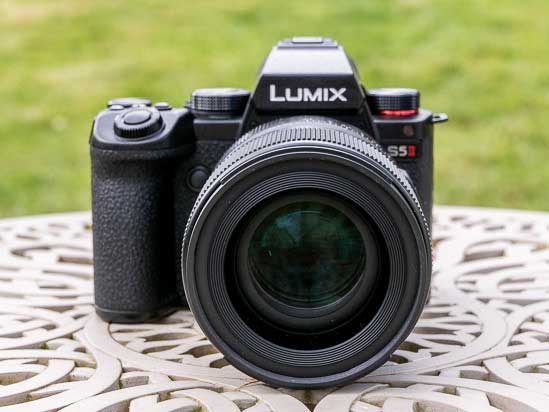
This new lens is slightly lighter and smaller than its main mirrorless rival, the Sony FE 50mm F1.2 GM, which weighs in at 778g grams and measures 87mm in diameter and 108mm in length. The Sigma version is also a lot cheaper, to the tune of around £800 / $600.
Compared to the older Sigma 50mm f1.4 DG HSM Art, which is one of the biggest and heaviest 50mm prime lenses that we’ve ever tested with a weight of 910 grams and measuring 12.6cm in length, the new Sigma 50mm F1.2 DG DN is impressively both substantially shorter and lighter, as well as offering a faster maximum aperture.
The Panasonic Lumix S Pro 50mm F1.4 is also a massive prime lens, weighing in at a whopping 955g and measuring almost 13cm in length, making it even larger and heavier than the Sigma 50mm f1.4 DG HSM Art.
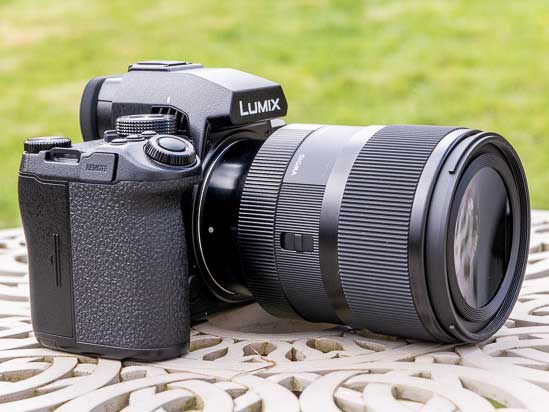
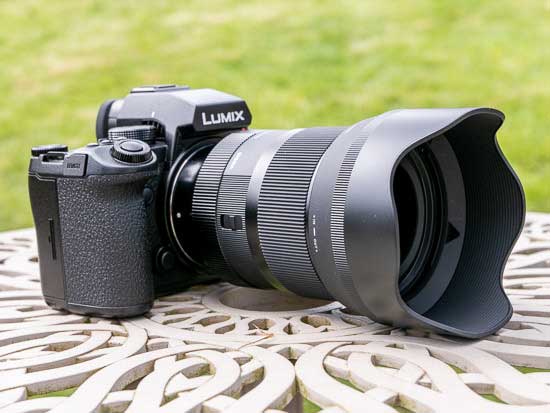
Build quality is excellent given the affordable price tag. The lens has a plastic shell with a mixture of metallic magnesium parts and a compound material, TSC (Thermally Stable Composite), used inside.
It also incorporates a brass bayonet mount that’s supposed to be more durable than a normal metal mount. The optical elements are made of high-grade glass. The Sigma 50mm f1.4 DG HSM Art certainly feels solid enough in your hand, despite its mostly polycarbonate construction.
It has a sealed dust and moisture resistant design, although Sigma stops short of saying that it’s 100% water-proof, stating that “Be careful not to bring the lens in contact with a large amount of water. Water inside the lens may cause major damage and even render the lens unrepairable.”
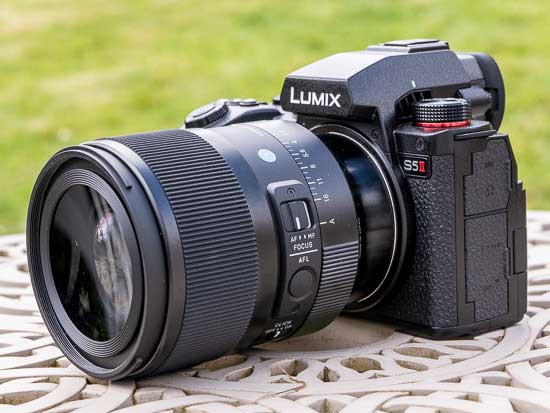
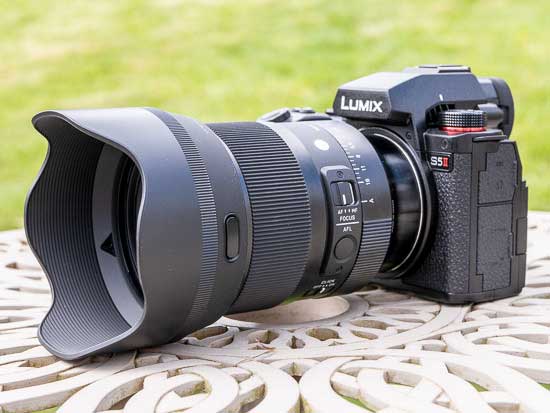
The Sigma 50mm F1.2 DG DN lens accepts 72mm filters via metal threads on the front of the lens.
The focusing ring is generously sized and is located towards the end of the lens barrel. There’s no distance scale and no depth of field scale on this lens.
There are no hard stops at either ends of the range, either, making it harder to set focus at infinity. Pol ariser users should be pleased that the 72mm filter thread doesn’t rotate on focus.
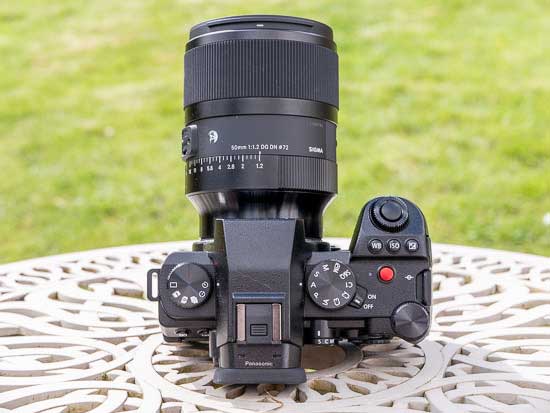
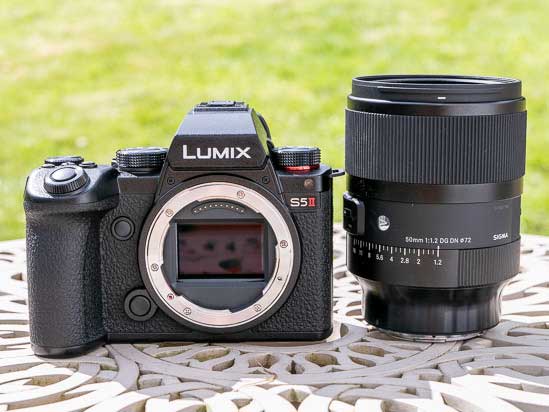
Manual focusing is possible by using the focus mode switch to toggle between AF and MF. An AF/MF switch on the side of the lens makes it easy to switch between the two focusing systems.
In use, we found the focusing system to be quiet, fast and reliable with the lens mounted on a Panasonic Lumix S5II camera.
It’s also a very quiet performer, thanks to the newly developed built-in dual High-response Linear Actuator motors, making it well-suited to video recording, especially as it has also been designed to suppress focus breathing.
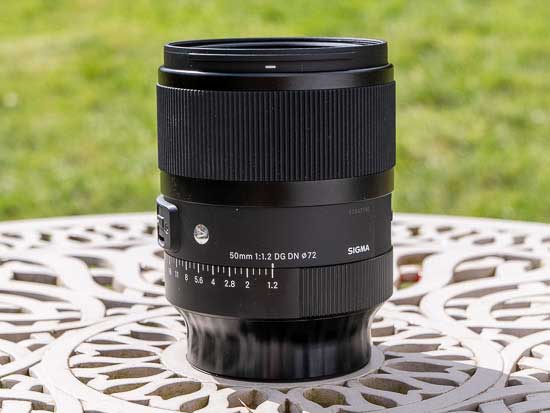
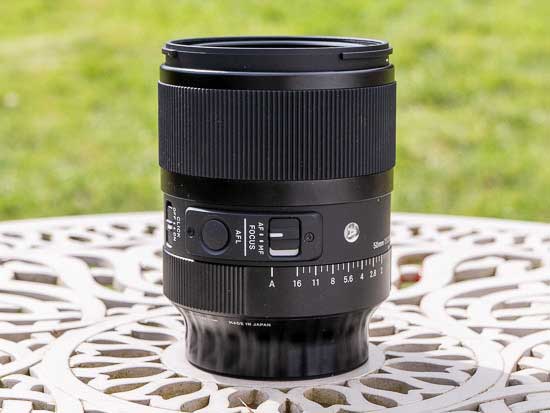
Full-time manual focus override is also available by using the Direct Manual Focus (DMF) function on Sony cameras and then rotating the focus ring.
There is a dedicated Auto Focus Lock (AFL) button which can be optionally re-configured to assign various functions to the lens barrel.
The Sigma 50mm F1.2 DG DN Art lens features a traditional aperture ring. It has 1/3EV stops ranging from f/1.2 to f/16 and an Auto setting if you prefer to set the aperture via the camera body.
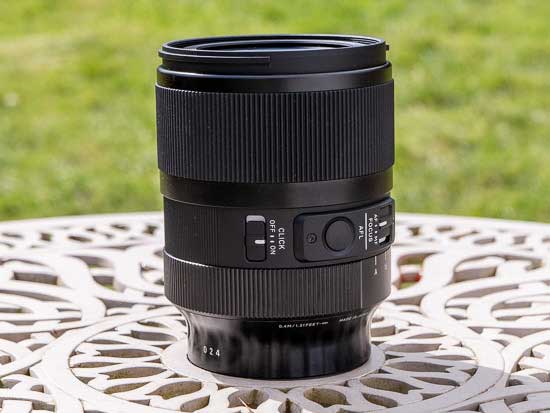
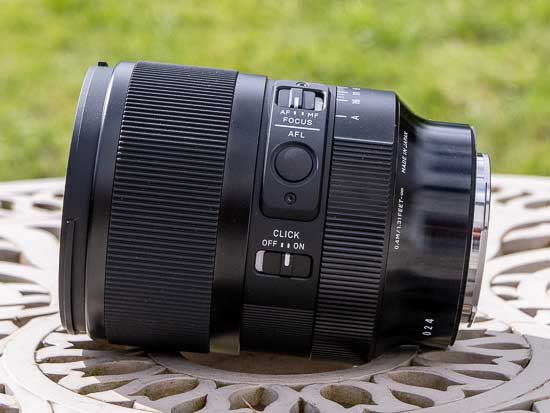
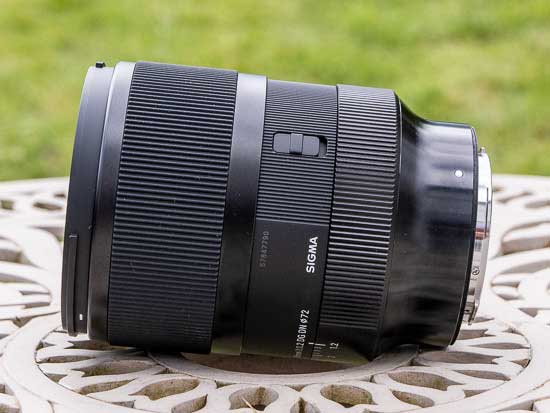
There’s also a Lock switch which either locks the aperture ring to Auto or to the aperture values, and a Click switch that lets you de-click it for silent operation during movie recording.
The lens doesn’t feature built-in optical image stabilisation, relying instead on the camera body’s stabilisation system.
The Sigma 50mm F1.2 DG DN Art lens is commendably supplied with plastic lens caps, a plastic circular petal-shaped lens hood (LH782-03) with a locking mechanism, and a good quality padded case.
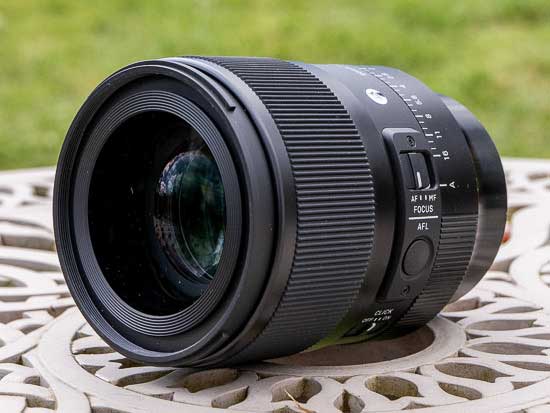
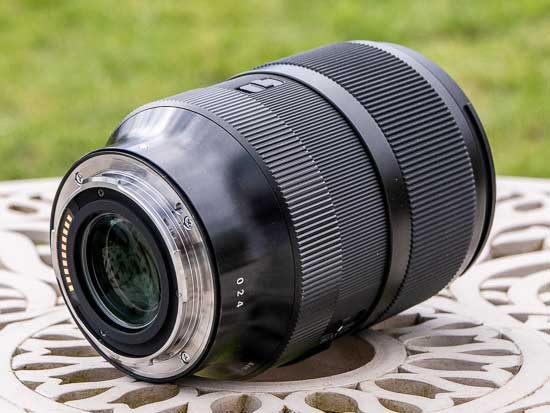
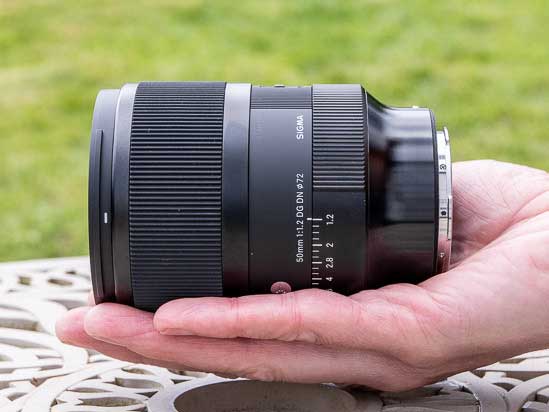
Focal Range
The 50mm focal length provides an angle of view of 47 degrees on a 35mm full-frame camera.

Chromatic Aberrations
Chromatic aberrations, typically seen as blue or purple fringes along contrasty edges, were not very apparent in our test shots, only appearing in very high contrast areas. The example below shows the worst-case scenario.

Vignetting
With the lens set to its maximum aperture of f/1.2, there is some light fall-off in the corners as you’d expect, requiring you to stop down by at least 3 f-stops to prevent it completely.

Distortion
There’s just a little barrel distortion evident which can easily be removed during post-processing.

Sunstars and Flare
The Sigma 50mm F1.2 DG DN is capable of producing quite nice sunstars when stopped-down to f/16, as shown below.
The lens is slightly susceptible to flare when shooting directly into the sun, though, even with the supplied lens hood fitted, but it’s mostly well-controlled.
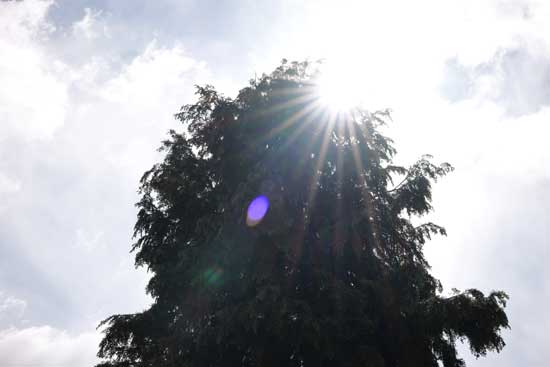
Macro
The Sigma 50mm F1.2 DG DN isn’t claimed to be a macro lens, but it does usefully offer a minimum focusing distance of 40cm / 15.8in. with a maximum magnification of 1:6.2. The following example demonstrates how close you can get to your subject.




Bokeh
Bokeh is a word used for the out-of-focus areas of a photograph, and is usually described in qualitative terms, such as smooth / creamy / harsh etc.
In the 50mm F1.2 DG DN lens, Sigma have employed an iris diaphragm with 13 circular blades, which has resulted in very appealing bokeh for a standard prime lens.
We do realise, however, that bokeh evaluation is subjective, so we’ve included several examples below for your perusal.


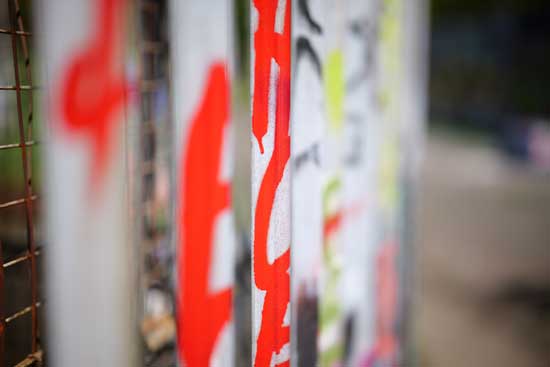
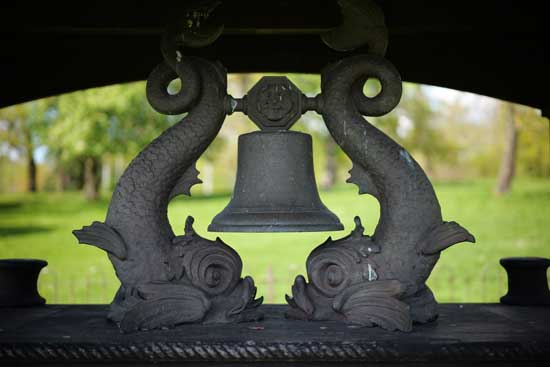



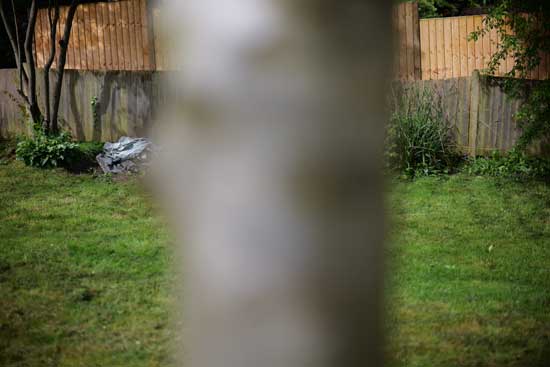
Sharpness
In order to show you how sharp the Sigma 50mm F1.2 DG DN lens is, we are providing 100% crops on the following page.
Credit : Source Post






